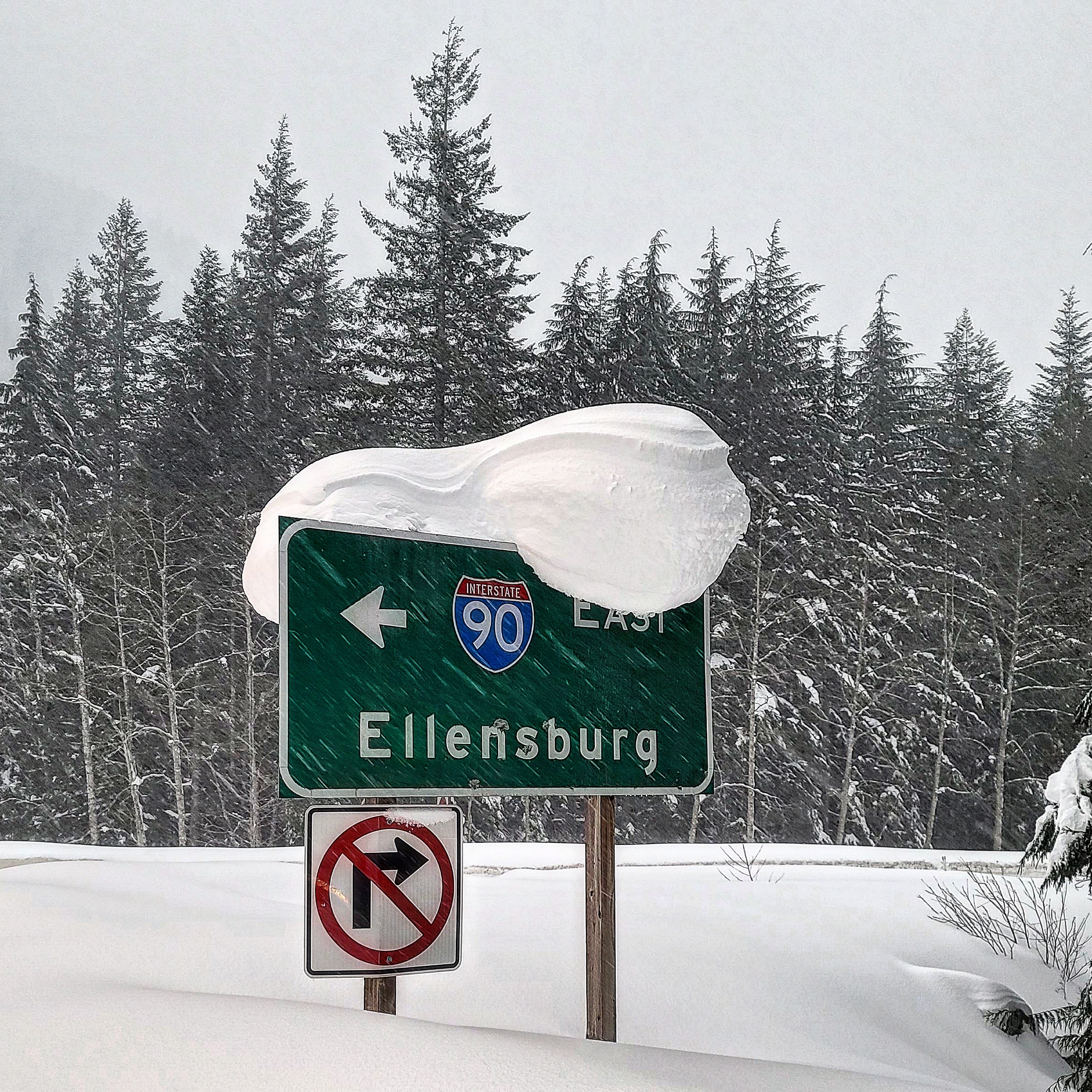The lowland snow that fell across much of Western Washington between Christmas and New Year’s Day may have melted, but up in the Cascade Mountains, it’s a completely different story, as Mike Lindblom reports:
There’s no way to drive across Washington state’s mountains until sometime this weekend, as the worst combination of snow and rain in many years has closed all four of the state’s winter highway routes between east and west.
A whiteout snowstorm early Thursday, followed by freezing rain and a half-foot or more of snow in the forecast, forced the Washington State Department of Transportation to close Snoqualmie, Stevens, White and Blewett passes.
Some of Washington’s mountain passes — for instance, Washington, Cayuse, and Chinook — are always closed during the winter season. But Snoqualmie (which I‑90 passes over), Stevens (which U.S. 2 passes over) and White (which U.S. 12 passes over) are kept open, at least to the extent that’s feasible.
Today, WSDOT concluded that it would neither be safe nor sensible to try to open any of those passes (which have seen intermittent closures over the last few weeks) to auto and freight traffic anytime soon. The weather is just that bad.
The department explained its position to the traveling public in a series of tweets:
Evening update: Snoqualmie, Stevens, White & Blewett passes remain closed.
Because of the conditions and amount of work needed to safely re-open, our passes will likely remain closed until Sunday.
Conditions are too dangerous for crews to be in the pass areas. Snow & debris continue to slide onto the highways. Crews are working in areas where it is safe to plow, clear catch basins & do other work to have those areas ready when we can reopen.
More snow and possibly rain is in the forecast for the passes tonight. This will only increase the avalanche danger.
If it is safe to do so, we will spend all day Friday addressing avalanche issues to create a safe work zone. Once avalanche work is done, we will spend Saturday clearing the areas, including plowing and treating roads, removing snow/ice from signs, clearing trees & debris from the road and clearing catch basins for drainage.
In lowlands, heavy rain in several areas of the state will increase flood & washout danger. Several rivers are under advisories with risks to increase as snow melt continues. There is high danger of downed trees due to saturated soil, heavy snow & rain.
In Eastern WA, rain/flooding is a concern as is snow and strong winds, including in the Palouse.
Blowing and drifting snow produce low visibility and challenging conditions leading to road closures and possibly power outages.
We recognize the importance of these corridors but nothing is more important than the safety of our crews and the public.
We are prepared to move in once it is safe, and we appreciate your patience during this challenging situation.
To the south, ODOT was forced to temporarily close Interstate 84 to all traffic through the Columbia River Gorge. The department reopened the highway after clearing a debris slide, at around 7:30 PM Pacific, but advised that unsafe conditions could prompt another closure at any time.
Snoqualmie Pass has seen more snow in recent days than at any time in the past few decades. While it’s nice to have a robust snowpack early in the season, it seems that lately, we’re getting too much of everything. Too many dry stretches that yield conditions ripe for fires to spread. Too many rainy spells that result in flooding. And now too many snowstorms that make travel difficult.
Scientists have warned for years that more extreme weather (of all sorts and in all seasons) would be a consequence of climate damage. And that is precisely what we are seeing now. This multi-day shutdown of the passes will impede mobility, freight, and commerce, but it can’t be helped. Allowing people to attempt a journey over any of the passes would be a recipe for disaster.
Safety comes first, as WSDOT said. The department can’t wave a magic wand and make the avalanche threat go away, nor can its crews snap their fingers and turn off the snow from the skies above. Those needing to get across the mountains will either have to wait or book a flight. (Alaska/Horizon offers multiple daily cross state flights, including Seattle <> Spokane and Seattle <> Yakima.)
Amtrak’s Empire Builder, which makes use of the Cascade Tunnel operated by BNSF Railway, was also canceled today, although tomorrow’s departure to Spokane and points east is listed as “On Time.” The second Cascade Tunnel, built nearly one hundred years ago, allows trains to traverse the snowy Cascades even in extremely wintry conditions such as those we have seen lately.
In happier news, WSDOT reported that it has cleared a long stretch of U.S. 101 between Hoodsport and State Route 104, reopening that route to traffic. A blockage on State Route 510 at Mud Mountain Road has also been cleared.

